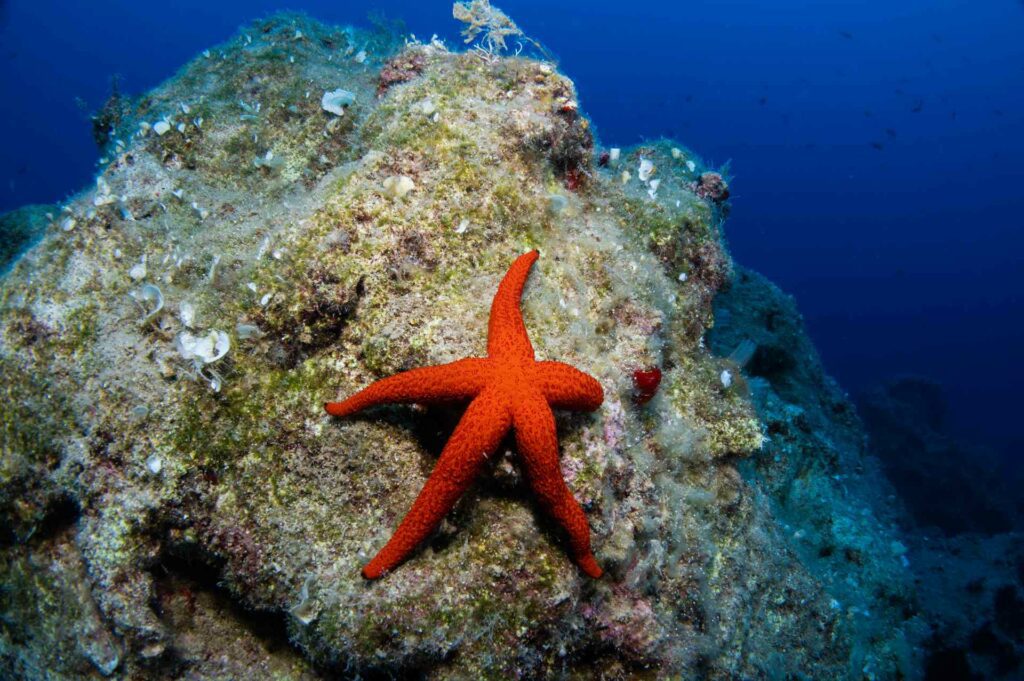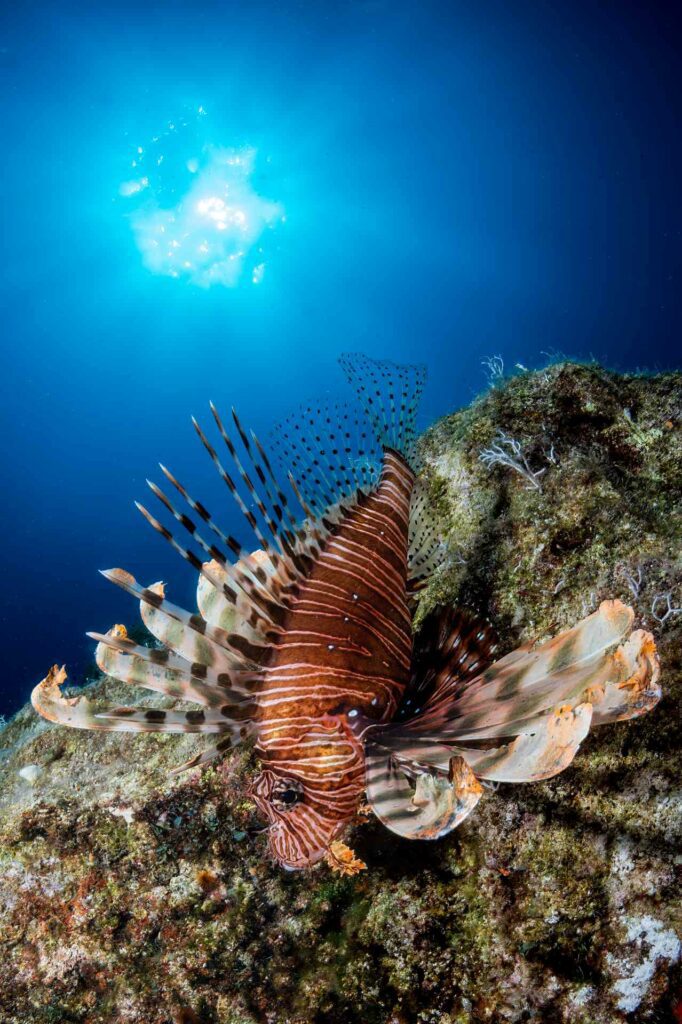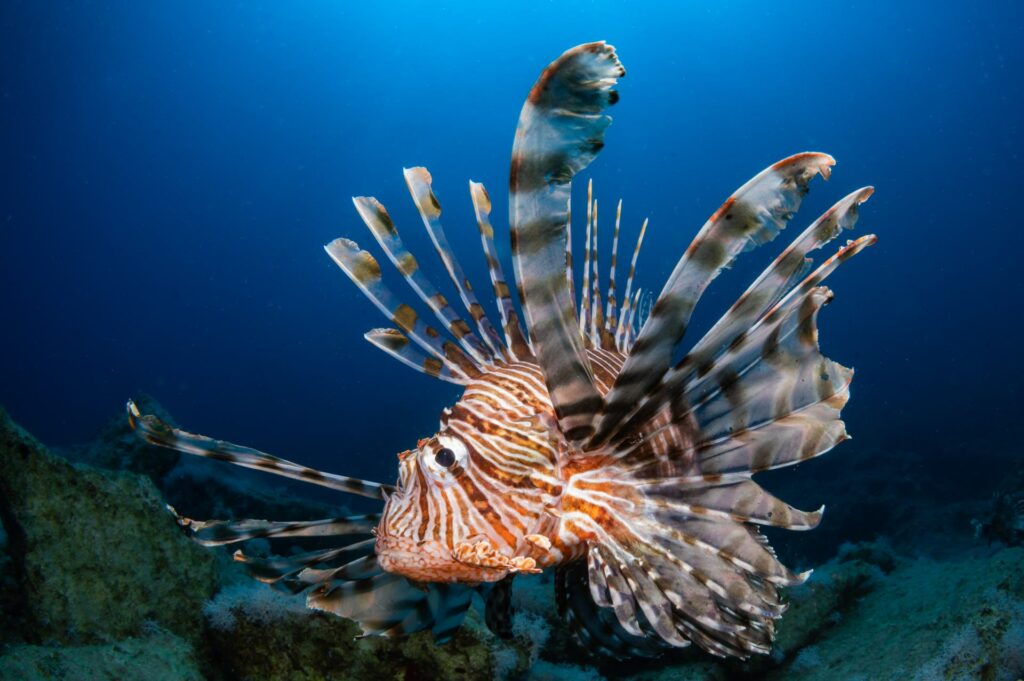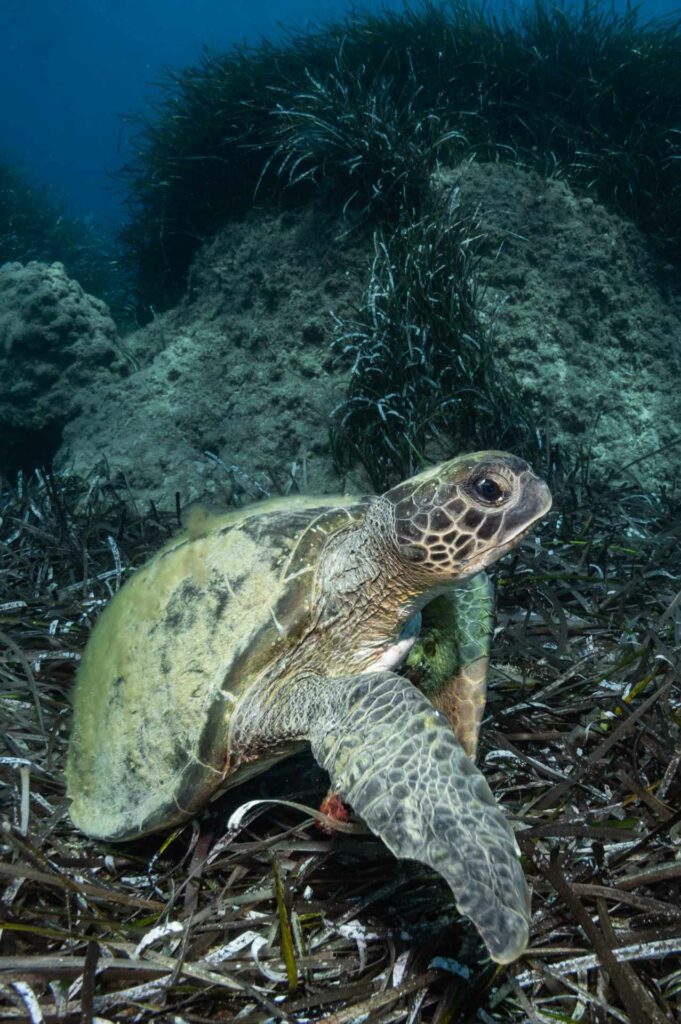There have been few efforts so far to report on the Mediterranean lionfish invasion, says Underwater Photography Guide‘s editor-in-chief NIRUPAM NIGAM. He visited Turkey to check out the problem first-hand, and took all the photos
The Mediterranean Sea has been a popular tourist destination for decades, with a rich history and striking landscapes drawing worldwide visitors. More than just a postcard-worthy backdrop for a holiday, the Mediterranean has been at the centre of civilisation for millennia, as a vital trade route and provider of sustenance to its many nearby inhabitants.
Bordered by Europe, Africa, and the Middle East, evidence of the trade and conflict is under water; fascinating shipwrecks draw scuba divers to destinations including Malta and Cyprus.
Historical connections
Human activity has a lasting impact on our planet, as evidenced by the evolution of the Mediterranean Sea and its inhabitants.
When the Suez Canal was completed in 1869, the Mediterranean opened to the rest of the world, enabling a more efficient trade flow into and out of Europe. While these changes had a visible impact topside, they also affected the underwater world, with marine animals following container ships as they travelled between the established ecosystems of the Red Sea and the Mediterranean.

The warmer waters and higher salinity of the Red Sea provide a robust environment for diverse marine species to thrive. As such, the most common migration of marine life is from the Red Sea to the Mediterranean, known as the Lessepian Migration.
More than 300 species have migrated to the Mediterranean, resulting in substantial changes to its ecosystem. The most notable of these is the infamous lionfish.
A beautiful invasive species
Divers are familiar with the striking beauty of the lionfish, decorated with feather-like spines renowned for their painful venom. The fish are endemic to many parts of the world, including the Indo-Pacific and Red Sea, and are routinely spotted when diving or snorkelling in these regions.

What happens when a rapidly reproducing venomous fish enters a new ecosystem? When lionfish were accidentally introduced to the Western Atlantic and Caribbean, they rapidly became the region’s most invasive species.
Female lionfish produce 2 million eggs per year and spawn every four days. This incredible reproduction rate in areas with no natural predators has led to a robust population of problematic fish. Lionfish threaten the entire reef ecosystem and ocean by feeding on smaller, juvenile reef fish.
If a lionfish invasion has been so detrimental in the Caribbean that it has inspired lionfish hunting courses, what hope does the Mediterranean have? Although the Lessepian Migration began with the completion of the Suez Canal, lionfish have become a problem in the Mediterranean only in recent years, because of rising water temperatures.
The European Commission raised the alarm about lionfish in 2015, resulting in efforts to learn from scientists involved in lionfish removal in the Western Atlantic.
A diver’s startling discovery

In the summer of 2022, I packed up my dive gear and traveled to the Turkish Riviera to dive into the waters of the Lycian coast and see what I could discover. The small town of Kas is a hub for scuba diving in Turkey, and where I went out on a dive-boat to plunge into the crystal-clear Mediterranean waters.
The first dive-site met my low expectations and featured mostly lifeless dramatic topography. With 75% of fish stocks in the Mediterranean categorised as overfished, I had anticipated that the Mediterranean would have few fish. In my dives, I discovered this to be true; the only place I had seen fewer fish was in the Gulf of Maine.

As I continued to descend, I noticed “small, dark, basketball-sized shadows” emerging from the depths. I approached them as they hovered in the blue; I recognised the familiar spines and striations of lionfish and was shocked to see numbers in the dozens.
The fish turned and flared their spines in warning. Some lionfish curiously approached their reflections in the dome of my underwater camera.

As the group continued their dive, I realised that there were lionfish everywhere; it was a dramatically different situation from the invasion in the Caribbean. Lionfish appeared to be the primary marine species in the waters around Kas. Rather than an invasion, this was more like a replacement.

Conclusions
Divers bear witness to the constantly changing and adapting ecosystems in our oceans and can have a significant impact by documenting and sharing their stories with others. Although I did only a few dives in a small region of the Mediterranean, even anecdotal evidence of a profound lionfish invasion is enough to consider its ramifications.

Influence on the natural world
How can we help reset the scales and right this imbalance in the Mediterranean Sea? Scuba divers and freedivers can help to create programmes to cull and eat lionfish, as they have done in the Caribbean.
Establishing fisheries to capture lionfish in the Mediterranean would provide an excellent source of protein to the region. However, it is complicated, if not impossible, for humans to effectively intervene in an ongoing invasion through the Suez Canal.
Time will tell how the lionfish invasion will affect the Mediterranean Sea. As Jeff Goldblum’s Jurassic Park character Dr Malcolm says: “Life finds a way.”
Lionfish invasion by numbers
There are few factual estimates to be found, but the Cyprus-based organisation RELIONMED has been helming a project to document and cull lionfish in the Mediterranean. “Lionfish sightings displayed an exponential growth since 2013 when a few lionfish were sighted,” it states on its website.
“Indicative of this growth in the population is the fact that only a few years later, in November 2017, a RELIONMED team collected 74 individuals in a single removal expedition at a Marine Protected Area with a surface area less than a hectare!”
The organisation also notes in its 2022 Lionfish Report that from March 2019 to November 2021, its removal campaigns collected 4,767 lionfish.

NIRUPAM NIGAM is a dedicated underwater photographer and fisheries scientist. He grew up in Los Angeles, pursuing underwater photography in the local Channel Islands. With degrees in aquatic & fisheries science and general biology and a minor in Arctic studies from the University of Washington, he worked as a fisheries observer on boats in the Bering Sea and North Pacific, and became editor-in-chief of Underwater Photography Guide and president of Bluewater Photo. Check out more of his photography, and find out about Bluewater Travel
Also on Divernet: Ouch! Lionfish, divers & a world of pain, Motivating Med divers for lionfish war, Lionfish move menacingly into the Med, Now Cyprus has too many lionfish


For the best tools to remove invasive Lionfish check out the Lionfish Locker from aquatichunt.com or amazon.com/aquatichunt